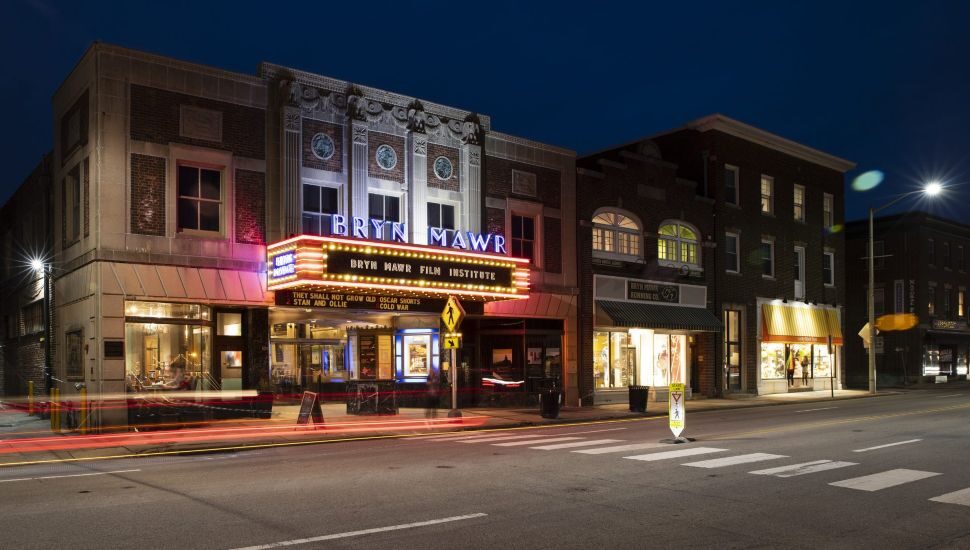Marlee Matlin Incident in Utah Raises Inclusion Issue at the Movies; Bryn Mawr Film Institute Responds


In response to a recent story in the nation’s entertainment industry, one with implications for special-needs audience members, the Bryn Mawr Film Institute (BMFI) cites its ongoing efforts to be as welcoming as possible to all area cinephiles.
The issue reached attention at a Jan. 23 juried screening at the Sundance Film Festival in Park City, Utah. The showing of a competition entry was marred by a malfunction in the closed-captioning feature that could not be fixed quickly, reported Variety.
In response, actress and competition judge Marlee Matlin, deaf since toddlerhood, exited the screening.
Considering the rise in sensitivity to meeting audience needs in the aftermath of Matlin’s actions, the BMFI is highlighting its policies designed to ensure a positive moviegoing experience for every patron.
Open- and Closed-Captioned Screenings
Tuesdays at BMFI feature open-caption screenings; times for these showings vary (check the Bryn Mawr Film Institute’s website for specifics).
Open captioning, a tech augmentation somewhat like its counterpart closed captioning, embeds dialogue and some action on the print itself. It remains visible to all audience members throughout a feature.
For those who prefer closed captioning, the Bryn Mawr theater is equipped for that as well.
Its closed-caption technology consists of individual LED screens that fit into patrons’ cup holders on their seats. That screen displays the text of the dialog and associated sounds necessary for these audience members to enjoy the feature.
The BMFI provides this personal technology free of charge at the concession stand.
Additional Tech
The BMFI open- and closed-caption capabilities are augmented by audience-friendly tech that relies on individual headphones.
Special devices aid those who may be hard of hearing. The technology comprises an audio neck loop that coordinates with a hearing aid to amplify sound individually. These, too, are free for the asking in the theater.
For blind patrons, an audio description feature keeps them involved in the on-screen action, comedy, or drama.
Audio description is a recorded commentary track that describes the visual details in a film that cannot be gleaned from listening to the soundtrack alone.
These devices, too, come without cost.
Going Gaga
The BMFI’s welcome extends even to guests without an overt physical condition but who may need some extra services to enjoy a movie.
For area caregivers seeking an afternoon out but concerned about bringing an infant to the theater, the organization has a “Going Gaga” program.
These Wed. afternoon screenings keep the house lights dim enough to navigate a baby’s potential needs (or a caregiver-infant temporary exit) without being so bright as to wash out the projected film.
Further, the soundtrack volume is dialed back a notch or two to protect young ears.
Attendees are also reminded that all rear-lobby restrooms feature convenient changing tables.
Other Welcomes
In its effort to be as welcoming to audiences as possible, the BMFI also offers:
- Presentation of all signage in braille
- No charge for patient care assistants (PCAs) accompanying a disabled audience member
- Full accessibility at all entrances at all four theaters and public areas
- Automatic doors at the Lancaster Ave. entrance
- Wheelchair seating in all theaters
- Elevator access to the second-floor classroom
- An onsite wheelchair to bring patrons to/from their seats, accompanied by a BMFI staff member if needed
- Restrooms designed for wheelchair/power-chair accessibility
Full details on all these methods of ensuring a positive movie experience for all audience members are on the Bryn Mawr Film Institute website.
_____
This 2016 documentary on the Bryn Mawr Film Institute was produced by a filmmaker who was a high-school student at the time.
Stay Connected, Stay Informed
Subscribe for great stories in your community!
"*" indicates required fields



![95000-1023_ACJ_BannerAd[1]](https://montco.today/wp-content/uploads/sites/2/2023/03/95000-1023_ACJ_BannerAd1.jpg)















![ForAll_Digital-Ad_Dan_1940x300[59]](https://montco.today/wp-content/uploads/sites/2/2022/06/ForAll_Digital-Ad_Dan_1940x30059.jpg)






















